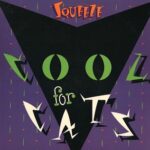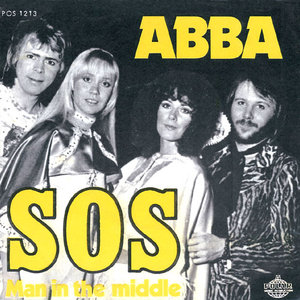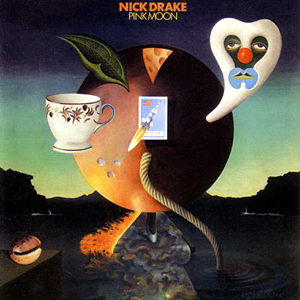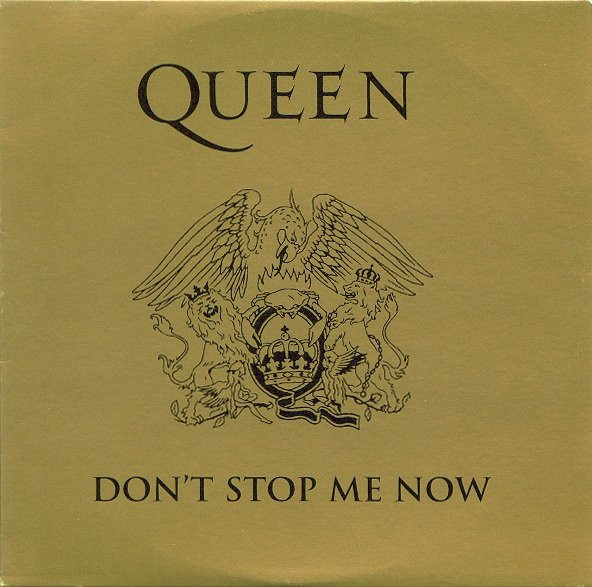 It’s not every pop song that can sound both effortlessly cheeky and quietly brilliant. But Squeeze’s 1979 single “Cool for Cats” manages exactly that—an unfiltered slice of late-’70s British street culture dressed up in swagger, wit, and one of the most addictive grooves of its era. Long before Britpop or post-punk revivalists were documenting city life with clever wordplay, Squeeze had already mastered it. “Cool for Cats” is their calling card—a song that’s equal parts pub poetry, kitchen-sink realism, and cockney rock ’n’ roll theater.
It’s not every pop song that can sound both effortlessly cheeky and quietly brilliant. But Squeeze’s 1979 single “Cool for Cats” manages exactly that—an unfiltered slice of late-’70s British street culture dressed up in swagger, wit, and one of the most addictive grooves of its era. Long before Britpop or post-punk revivalists were documenting city life with clever wordplay, Squeeze had already mastered it. “Cool for Cats” is their calling card—a song that’s equal parts pub poetry, kitchen-sink realism, and cockney rock ’n’ roll theater.
When it first hit the airwaves, it didn’t sound like anything else. The beat was danceable but deadpan, the guitars sharp but minimal, and the vocals—delivered in a half-spoken, half-sung drawl by bassist Chris Difford—oozed Britishness in every syllable. It’s a song that turns everyday working-class life into something cinematic, with all the humor, grit, and attitude of a pint-soaked Friday night in South London.
A Streetwise Snapshot of 1979 Britain
“Cool for Cats” arrived at an interesting time in the UK’s musical landscape. Punk had exploded and was already morphing into new wave, disco was on the radio, and the charts were a strange mix of rebellion and gloss. Squeeze, fronted by songwriting partners Difford and Glenn Tilbrook, stood somewhere in the middle. They weren’t sneering punks or glittering pop stars—they were storytellers with guitars, turning the rhythms of ordinary life into miniature epics.
The title track of their second album, Cool for Cats (1979), perfectly captured that in-between space. Its release marked the band’s breakthrough moment, climbing to No. 2 on the UK Singles Chart and turning them into one of Britain’s most promising young bands. But what really made “Cool for Cats” stand out wasn’t just its chart success—it was its voice.
Where American rock of the late ’70s was full of swaggering excess, “Cool for Cats” was proudly small-scale. It didn’t dream of limousines or arenas; it took place in flats, pubs, and back alleys. Its characters aren’t heroes—they’re barflies, lovers, cab drivers, and everyday dreamers. It’s working-class poetry disguised as a pop single.
The Beat of the Everyday
From the first note, “Cool for Cats” makes you want to move. That chugging rhythm guitar, the punchy bassline, and the dry, clipped drumming from Gilson Lavis create a minimalist groove that’s irresistibly catchy. There’s no grand production, no excess reverb—just a tight, rhythmic pulse that mirrors the heartbeat of city life.
Then the song kicks into that instantly recognizable riff—a bouncing, almost cartoonish melody that somehow manages to be both playful and menacing. It’s the perfect setup for Difford’s spoken-word storytelling. Unlike the soaring vocals of Glenn Tilbrook (who usually handled the singing), Difford’s delivery is rough-edged and conversational, full of character. It’s as if he’s leaning across a pub table, telling you stories about his mates while the jukebox hums in the background.
The chorus, sung by Tilbrook and the band, swoops in like a polished pop hook amid the grit:
“Cool for cats, cool for cats…”
It’s deceptively simple but endlessly replayable. Each verse leads you deeper into the world of Squeeze—one filled with humor, heartbreak, and the constant buzz of everyday life.
A Masterclass in Lyricism
What sets “Cool for Cats” apart from most songs of its era is its sheer lyrical brilliance. Difford’s words tumble out in a stream of urban observation, full of vivid imagery and dry wit. Each verse is a snapshot—a glimpse into the lives of ordinary people navigating love, lust, boredom, and bravado.
Take the opening lines:
“The Indians send signals from the rocks above the pass / The cowboys take position in the bushes and the grass.”
It sounds like the start of a Western, but Difford’s quickly setting up a playful metaphor—life as a shootout, love as a standoff. It’s cinematic and absurd in equal measure. The song’s storytelling style owes as much to British television and working-class comedy as it does to pop songwriting. You can practically see the scenes unfolding: a drunken night out, a failed flirtation, a long bus ride home under flickering streetlights.
Later verses bring more vignettes: a man too shy to talk to a girl, a domestic squabble, a bit of swagger that masks insecurity. Difford’s delivery, dry as gin, gives each line its punch. There’s no sentimentality—just sharp, observational humor. It’s like The Kinks’ Ray Davies meeting The Clash in a smoky pub, trading stories about life, love, and lost paychecks.
And yet, beneath the smirk and the slang, there’s something melancholic about it all. The song knows that life isn’t glamorous—that being “cool for cats” is often just an act, a pose to survive in a world that doesn’t offer much else. That duality—cool surface, beating heart—is what makes Squeeze so enduring.
Cockney Attitude and Pop Precision
Musically, “Cool for Cats” is deceptively complex. The rhythm feels mechanical at first—almost robotic—but it’s packed with tiny flourishes that give it personality. Lavis’s drumming is dry and sharp, Tilbrook’s guitar jangles with just the right amount of grit, and Jools Holland’s keyboards add a playful bounce that keeps the song from ever feeling too dark.
Then there’s the production. John Wood and the band keep everything clean and punchy, with no wasted space. It’s all about economy—every note matters, every instrument earns its place. The minimalist approach makes the song feel timeless. Even decades later, “Cool for Cats” doesn’t sound dated; it sounds direct, alive, and clever.
And of course, there’s the interplay between Difford and Tilbrook. Often called “the Lennon and McCartney of Deptford,” their chemistry is at the heart of every great Squeeze song. Difford’s lyrics are full of wit and streetwise detail; Tilbrook’s melodies give them emotional lift. On “Cool for Cats,” that dynamic reaches perfection—the earthy verses grounded in Difford’s delivery, the glossy chorus soaring thanks to Tilbrook’s knack for a hook.
More Than Just a Novelty
It would be easy to dismiss “Cool for Cats” as a novelty track—after all, its spoken verses and deadpan humor are unlike anything else in pop. But that would be missing the point. The song’s cleverness isn’t just in its quirk; it’s in how perfectly it captures the texture of real life.
For a band emerging during the rise of punk and new wave, Squeeze managed to sound rebellious without being nihilistic. Their rebellion was quieter, subtler. Instead of screaming against the system, they told stories about living within it—making ends meet, falling in and out of love, drinking too much, dreaming too little. “Cool for Cats” channels that understated defiance.
Its coolness isn’t about attitude—it’s about resilience. Being “cool for cats” means keeping your head up even when life’s absurd, laughing at the chaos, and finding your rhythm in the everyday grind.
The Song’s Enduring Legacy
Over forty years later, “Cool for Cats” still sounds effortlessly fresh. Its influence can be heard in the sharp storytelling of Arctic Monkeys, the clever pop sensibilities of Blur, and the everyday realism of The Streets. Every time a British songwriter pens a witty line about love and loneliness over a tight rhythm section, they’re channeling a bit of Squeeze.
The song also helped cement the band’s identity. While earlier singles like “Take Me I’m Yours” hinted at their potential, “Cool for Cats” proved that Difford and Tilbrook were more than just talented craftsmen—they were chroniclers of British life. The song’s success gave them the confidence to dig deeper, leading to later masterpieces like “Up the Junction,” “Pulling Mussels (From the Shell),” and “Tempted.”
Beyond its musical impact, “Cool for Cats” captures something intangible about its time and place. It’s the sound of post-punk Britain trying to find its groove again, of working-class kids turning their humor and frustration into art. It’s a reminder that sometimes the coolest thing you can do is simply tell the truth—rhymed, rhythmic, and razor-sharp.
Inside the Attitude
Part of what makes “Cool for Cats” endlessly fascinating is its tone. It’s self-aware but never smug, funny but not flippant. Difford performs each line like he’s half-mocking and half-celebrating his subjects. There’s affection in the way he describes these flawed, lovable characters. He’s not looking down on them—he’s one of them.
The title itself is borrowed from a British slang phrase that originally meant “stylish” or “smooth.” By the late ’70s, it carried a slightly ironic twist—a wink to those who tried too hard to be trendy. The song embraces that dual meaning: coolness as both aspiration and absurdity.
That’s why “Cool for Cats” feels so alive even decades later. It doesn’t romanticize the past—it teases it, plays with it, and invites you to laugh along. Whether you’re dancing to its beat or catching the subtle wordplay, it’s impossible not to be drawn into its world.
The Perfect Squeeze Moment
Every band has a defining track—the one that sums up their sound, spirit, and sensibility. For Squeeze, “Cool for Cats” is that song. It’s everything that makes them great distilled into three minutes and eleven seconds: clever lyrics, tight grooves, and an unshakeable sense of place.
It’s also the perfect showcase for their unique songwriting partnership. Difford’s world-weary humor meets Tilbrook’s pop craftsmanship in perfect balance. The result is a song that feels effortless but reveals new details with every listen—a sly metaphor here, a melodic twist there.
Even as the band evolved into more polished and soulful territory in the 1980s, “Cool for Cats” remained their signature—a reminder of where it all began. And when they perform it live, it still gets the loudest cheer. It’s the song that made them legends, even if they wore that status lightly.
Final Thoughts: Still Cool After All These Years
“Cool for Cats” isn’t just a hit single—it’s a cultural artifact, a snapshot of an era when pop music was smart, funny, and distinctly British. It’s the kind of song that captures life not as we wish it to be, but as it is: messy, charming, and endlessly interesting.
Squeeze managed to turn the mundane into the memorable, and “Cool for Cats” remains their masterpiece of understatement. It’s a song that struts but never shouts, winks but never wavers, and above all, makes being ordinary feel extraordinary.
More than forty years on, its groove still pops, its lyrics still sparkle, and its attitude still feels fresh. The best songs age gracefully; the greatest songs never age at all. “Cool for Cats” belongs to that rare second category—a permanent fixture in the soundtrack of British cool.


